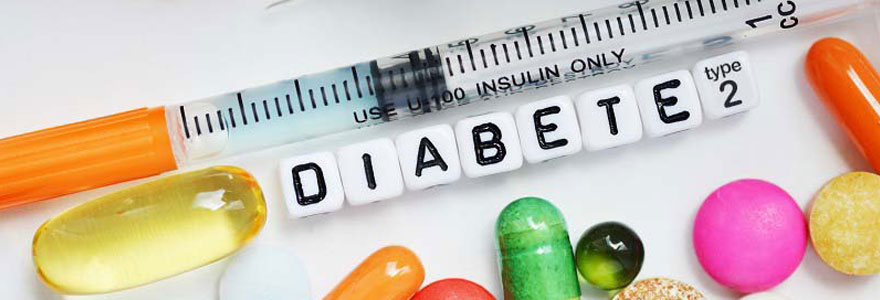
If you’re suffering from diabetes, your body might not effectively process and utilize glucose from the food you consume. There are various types of diabetes, each with its cause. However, all these types have the same problem of having excess glucose in your blood.
Some types of diabetes are treated by practicing a healthy lifestyle whereas others are treated using insulin and other medication. Click here to obtain more information regarding screening for type 2 diabetes. This website summarizes diabetes in three diabetes diagrams. These type 2 diabetes diagrams include healthy, prediabetic, and diabetic.
Type 2 diabetes is a serious illness both in the United States and across the world. Early screening can help to prevent more adverse complications such as chronic hyperglycemia. This post will discuss how type 2 diabetes and other diabetes-related diseases can be prevented and screened. So, keep reading!
What is Type 2 Diabetes?
Type 2 diabetes is a condition where a person’s body fails to produce adequate insulin or the cells fail to effectively respond to the insulin. Presently, this is the major type of diabetes and it accounts for more than 90% of all people suffering from diabetes. It occurs typically among old and middle-aged people.
Symptoms of Type 2 Diabetes
The problem with this condition is that many people who experience it are usually not aware that they’re suffering from this condition. This is because in most cases, type 2 diabetes does not possess any symptoms. Here are some of the symptoms to look out for:
- Feeling thirst frequently
- Fatigue and dizziness
- Blurred vision and dry mouth
- Unintentional loss of weight
- Urinating more than normal, more so at night
- Wounds and cuts take more time than usual to heal
- Itching around your genitals, or getting thrush repeatedly
When you have type 2 diabetes, the cells of your body are unable to allow insulin to operate as it should to absorb glucose into those body cells. With the absence of insulin to let glucose be absorbed into body cells, more and more glucose continues to build up in your blood. In some cases, a person’s genes could play a significant role in some people. Having a virus could also trigger an attack on the immune system as well.
Risk Factors for Prediabetes and Type 2 Diabetes
A person is more at risk of contracting prediabetes and type 2 diabetes if they:
- Are obese or overweight
- Are over 40 years old
- Are of African-Caribbean, black African, Pacific Islander, or Asian origin
- Have high blood pressure
- Are physically inactive
- Have a family history of prediabetes, diabetes, or type 2 diabetes
- Have a history of stroke or heart diseases
- Are smokers
Why Do You Need to be Screened for Diabetes?
The American Diabetes Association recommends that every patient needs to be screened for diabetes once they are 45 years old or older, especially if they are obese or overweight. Also, if a person possesses more risk factors, the screening should be carried out at an earlier age and regularly. Adults who are experiencing high levels of cholesterol or high blood pressure should be screened for type 2 diabetes to prevent the risk of cardiovascular illnesses.
What if the Screening Test is Positive?
Screening for type 2 diabetes typically involves FPG (fasting plasma glucose test) or the hemoglobin A1C test. If you test positive from the test, you have to undergo further testing to make sure that the diagnosis is accurate. The doctor could prescribe some medication together with regular exercise, diet, and a lifestyle program. This can help to manage your blood sugar levels and avoid serious complications.
What if the Screening Test is Negative?
If it turns out that your screening test is negative, your doctor will advise on when you should be screened next. If not, you should undergo periodical screening tests after every three or four years. However, even if your screening tests turned negative, the doctor could still opt to perform further tests for type 2 diabetes if they suspect that you’re suffering from diabetes or prediabetes.
Type 2 Diabetes Prevention
The main contributors to type 2 diabetes are lifestyle factors. Consuming a healthy, low-fat, low-sugar diet and participating in routine physical exercise can help to delay the progression and onset of type 2 diabetes. Taking metformin, an antidiabetic medication treatment, is also known to delay the progression of diabetes.
Therefore, do the following to prevent and manage diabetes:
- Plan on what you eat and follow a healthy meal routine. Here, consume mostly whole grains, vegetables, fruits, healthy fats, low sugar, and such. Such diets are rich in nutrients and fiber and they’re low in calories and fats.
- Regular exercise. To prevent type 2 diabetes, you must exercise for a minimum of 30 minutes per day every week. You can swim, walk, or perform an activity that you enjoy doing.
- If you’re overweight, you need to lose weight. You have to collaborate with your doctor and healthcare team and come up with a weigh-plan schedule and adhere to it.
- While at home, monitor your blood glucose and blood pressure levels. This will keep you aware on your sugar levels and help you to know when to seek medical treatment or adjust your lifestyle.
- If you smoke, quit smoking! Smoking only worsens diabetes and it is a great idea to stay away from active or passive smoking.
